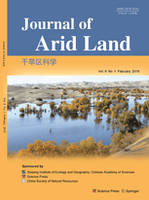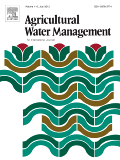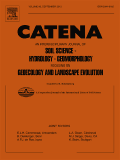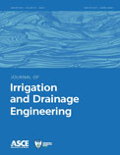
Air Soil and Water Research
Scope & Guideline
Exploring the Interplay of Air, Soil, and Water
Introduction
Aims and Scopes
- Environmental Pollution and Remediation:
The journal covers extensive research on various forms of environmental pollution, including air, water, and soil contamination, and explores innovative remediation techniques such as bioremediation and nanotechnology. - Water Resource Management:
A significant focus is placed on sustainable water management practices, including the assessment of water quality, irrigation efficiency, and the impact of climate change on water resources. - Soil and Agricultural Practices:
Research on soil health, erosion, and agricultural practices emphasizes sustainable farming techniques that enhance productivity while minimizing environmental impacts. - Climate Change Impacts:
The journal addresses the effects of climate change on environmental systems, including its impact on soil erosion, water availability, and air quality. - Geospatial Analysis and Modeling:
There is a strong emphasis on the use of geospatial tools and modeling techniques to assess environmental conditions, such as groundwater quality, land use changes, and pollutant dispersal. - Interdisciplinary Approaches:
The journal promotes interdisciplinary research that integrates knowledge from various fields, including ecology, engineering, and social sciences, to tackle complex environmental challenges.
Trending and Emerging
- Microplastics Research:
There is an increasing focus on microplastics and their environmental impacts, reflecting growing concerns about plastic pollution in aquatic and terrestrial ecosystems. - Climate Change Adaptation Strategies:
Research exploring adaptive strategies in agriculture, water management, and urban planning in response to climate change is on the rise, highlighting the urgency of developing resilient systems. - Integrated Water-Energy-Food Nexus:
The concept of the water-energy-food nexus is gaining traction, emphasizing the interdependencies between these resources and the need for integrated management approaches. - Use of Advanced Technologies in Environmental Research:
The application of machine learning, remote sensing, and geospatial analysis techniques is becoming increasingly prevalent, allowing for more sophisticated assessments of environmental data. - Sustainable Urban Development:
There is a growing trend in research focused on sustainable urban practices, including air quality improvement and urban water management, driven by the rapid urbanization and associated challenges.
Declining or Waning
- Traditional Agricultural Practices:
Research centered around traditional farming practices has decreased as there is a growing emphasis on innovative and sustainable agricultural methods that adapt to climate change and improve soil health. - Static Pollution Studies:
Studies that focus solely on static pollution assessments without considering dynamic interactions between air, soil, and water systems have become less prominent, as there is increased recognition of the need for holistic approaches. - Heavy Metal Contamination:
While still important, the frequency of studies specifically targeting heavy metal contamination has waned, possibly due to a shift towards broader environmental health assessments that include multiple pollutants. - Water Quality Monitoring Without Contextual Analysis:
Research that focuses solely on water quality measurements without integrating socio-economic or environmental context has seen a decline, reflecting a trend towards more integrated studies.
Similar Journals

Journal of Arid Land
Exploring sustainable solutions for arid ecosystems.Journal of Arid Land, published by SPRINGER HEIDELBERG, is a pivotal platform dedicated to advancing knowledge in the fields of Earth-Surface Processes, Management, Monitoring, Policy and Law, and Water Science and Technology. With an ISSN of 1674-6767 and an E-ISSN of 2194-7783, this journal stands out as a prominent source of scholarly research focusing on the unique challenges and opportunities of arid and semi-arid environments, particularly relevant in the context of global climate change. As of 2023, it holds a commendable Q2 ranking in several critical categories, underscoring its impact in environmental science and related disciplines. The journal, which has been in publication since 2009 and is set to continue through 2024, provides unrestricted access to high-quality research that sheds light on sustainable practices and effective policies. With its focus on arid lands, the Journal of Arid Land plays an essential role in fostering interdisciplinary dialogue among researchers, practitioners, and policymakers striving to address the pressing issues faced by these ecosystems.

EQA-International Journal of Environmental Quality
Exploring the nexus of human activity and environmental health.EQA-International Journal of Environmental Quality, published by the University of Bologna, Department of Agricultural Sciences, is a premier open-access journal dedicated to the multidisciplinary exploration of environmental quality issues. Established in 2009, it aims to foster a greater understanding of the intricate interactions between human activities and environmental health. With a focus on innovative research, the journal contributes to the advancement of knowledge across diverse fields, making it an essential resource for researchers, professionals, and students engaged in environmental science and sustainability. The journal operates with an emphasis on accessibility, ensuring that critical findings reach a global audience without barriers. With an impressive Scopus rank of 88 out of 171, EQA stands as a significant platform for disseminating impactful research that informs policy and promotes environmental stewardship.

Soil and Water Research
Advancing Sustainability Through Soil and Water InsightsSoil and Water Research, an esteemed journal published by the Czech Academy Agricultural Sciences, is dedicated to advancing the fields of Aquatic Science and Soil Science. With a strong commitment to open access since 2006, this journal facilitates the dissemination of high-quality research and fosters global collaboration among researchers, professionals, and students. Operating from the vibrant academic hub of Prague, Czech Republic, it serves as a key resource for those interested in pressing environmental and agricultural challenges. Featuring a robust H-index and ranking in the Q2 category for both Aquatic Science and Soil Science as of 2023, Soil and Water Research occupies a prominent position in Scopus, ensuring that published works reach a wide audience. The journal invites contributions that explore innovative methodologies and provide insights into soil and water management practices, thus playing a critical role in addressing sustainability issues within these interconnected domains. As researchers navigate the complexities of climate change and resource management, Soil and Water Research stands out as a vital tool for informed decision-making and impactful research.

Water Resources and Irrigation Management-WRIM
Enhancing Agricultural Productivity through Water InsightsWater Resources and Irrigation Management (WRIM), published by Universidade Federal do Recôncavo da Bahia, is a vital academic journal focused on the essential fields of water resources and irrigation practices. With an ISSN of 2316-6886, this journal aims to disseminate high-quality research that addresses the challenges of sustainable water management in agricultural settings, particularly in the unique contexts of Brazil and similar ecosystems. The journal emphasizes rigorous empirical studies, innovative approaches, and policy implications, positioning itself as a key resource for researchers, practitioners, and students engaged in water resource management and agricultural sustainability. Although currently not available as Open Access, WRIM is dedicated to advancing knowledge in this critical area, encouraging collaboration and discourse among professionals passionate about optimizing irrigation systems and environmental stewardship.

Asian Journal of Water Environment and Pollution
Fostering impactful discussions on water pollution management.Asian Journal of Water Environment and Pollution is a leading academic journal published by IOS PRESS, dedicated to advancing the field of water science and technology, as well as pollution management. With its ISSN 0972-9860 and E-ISSN 1875-8568, this journal serves as a pivotal platform for researchers, professionals, and academics alike who are keen to explore innovative solutions and interdisciplinary approaches toward water-related challenges and environmental issues. Although currently positioned in the Q4 category for both pollution and water science & technology, the journal aims to foster impactful research and discussions that can enhance the understanding and treatment of water pollution. The Asian Journal of Water Environment and Pollution not only plays a crucial role in disseminating knowledge but also encourages the sharing of findings from unique geographic perspectives, particularly from Asia. As the field evolves, this journal is poised to become a vital resource for those looking to contribute to sustainable water management practices and pollution reduction strategies.

Grundwasser
Empowering the next generation of water science leaders.Grundwasser is a prominent academic journal hosted by SPRINGER HEIDELBERG, dedicated to advancing knowledge in the field of water science and technology. With its ISSN 1430-483X and E-ISSN 1432-1165, the journal serves as a crucial platform for disseminating research findings, methodologies, and case studies related to groundwater management, hydrology, and environmental sustainability. Since its inception in 1997 and continuing through 2024, Grundwasser has established itself within the Q3 quartile of the Water Science and Technology category, as recognized by Scopus, ranking #164 out of 261 in Environmental Science. The journal emphasizes rigorous peer-reviewed content, aimed at fostering a deeper understanding of groundwater systems, their ecological implications, and the challenges posed by climate change. Researchers, professionals, and students are encouraged to delve into the latest studies and contribute to this vital area of environmental science, contributing to both academic knowledge and practical applications in groundwater sustainability.

Agricultural Water Management
Advancing Sustainable Solutions in Agricultural Water ManagementAgricultural Water Management, published by ELSEVIER, is a leading journal in the fields of agronomy, soil science, and water resource management. With an impressive impact factor reflecting its relevance and authority—ranking Q1 in multiple categories including Agronomy and Crop Science, Earth-Surface Processes, Soil Science, and Water Science and Technology—the journal serves as a critical platform for groundbreaking research and innovative practices aimed at enhancing agricultural sustainability and efficient water use. Operating since 1976, it has maintained a strong commitment to disseminating high-quality scholarly work that addresses contemporary challenges in water management related to agriculture across diverse environments. Readers can expect to find a spectrum of research articles, review papers, and case studies that not only contribute to scientific knowledge but also inform policy and practice for professionals in the field. While not open access, the journal remains a pivotal resource for researchers, practitioners, and students keen to advance their understanding of agricultural water issues and their implications for the global ecosystem.

EURASIAN SOIL SCIENCE
Uncovering critical insights in earth-surface processes.EURASIAN SOIL SCIENCE, published by PLEIADES PUBLISHING INC, is a premier journal dedicated to advancing knowledge in the fields of soil science and earth-surface processes. With an ISSN of 1064-2293 and an E-ISSN of 1556-195X, this journal has been a key resource for researchers and professionals from its inception in 1992 and continues to thrive as it converges toward 2024. Situated in the United States, EURASIAN SOIL SCIENCE has achieved notable recognition, attaining a Q2 ranking in both Earth-Surface Processes and Soil Science categories as of 2023. Its Scopus rankings further underscore its importance, with Earth and Planetary Sciences placing it at #81/179 and Agricultural and Biological Sciences ranking it at #80/159. Engaging a global audience, this journal publishes cutting-edge research articles, reviews, and case studies that address critical issues related to soil health, conservation, and management. Though currently not open access, the journal offers valuable insights and fosters collaboration among scientists and practitioners, underscoring its vital role in enhancing the understanding of soil dynamics and sustainability.

CATENA
Fostering High-Impact Discoveries in GeoscienceCATENA is a distinguished academic journal published by Elsevier, focusing on the critical field of Earth-Surface Processes. With a solid foundation established in 1973, CATENA has continuously evolved, offering a platform for high-impact research and groundbreaking discoveries in geosciences. The journal holds an impressive Scopus rank of #8 out of 179 in its category, placing it in the top 5% of its field, which underscores its importance and influence among researchers and practitioners alike. While CATENA does not operate under an open access model, its commitment to disseminating essential findings is evident in its rigorous peer-review process and inclusion of diverse studies. Located in the Netherlands, CATENA not only serves as an essential resource for professionals and students but also contributes valuable insights that help address global environmental challenges.

JOURNAL OF IRRIGATION AND DRAINAGE ENGINEERING
Transforming Water Challenges into OpportunitiesJOURNAL OF IRRIGATION AND DRAINAGE ENGINEERING, published by the ASCE - American Society of Civil Engineers, stands as a pivotal resource in the fields of irrigation and drainage engineering. With a rich publication history dating back to 1966 and continuing robustly through to 2024, this journal serves as a critical platform for disseminating innovative research and developments that contribute to effective water management practices. Catering to an audience of researchers, professionals, and students, it holds a notable impact factor within its categories, ranking Q2 in Agricultural and Biological Sciences (miscellaneous) and Q3 in both Civil and Structural Engineering and Water Science and Technology for 2023. This journal not only stimulates dialogue among experts but also addresses pressing global water challenges, promoting sustainable practices in resource management. Although it does not offer open access, the depth of its content and adherence to rigorous academic standards ensure it remains an essential citation for anyone involved in water resource engineering and the applied sciences surrounding agricultural efficiency.